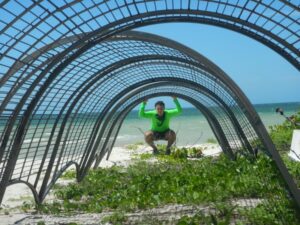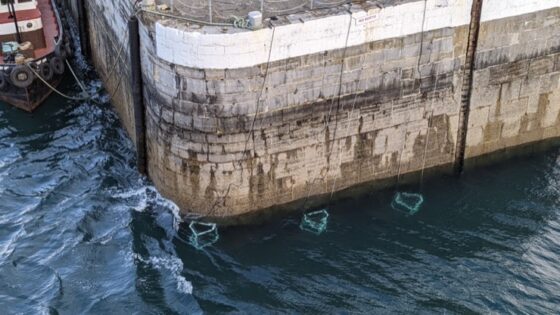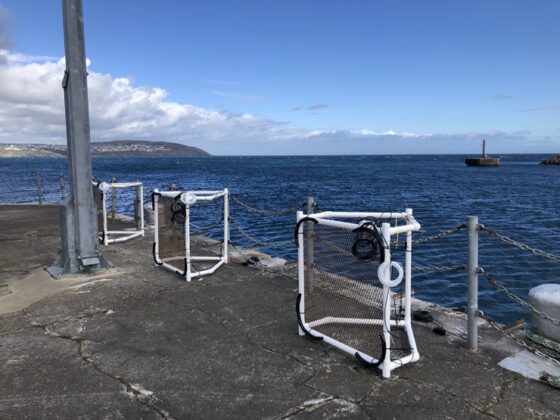
Artificial reef to protect new Isle of Man ‘eco-marina’

British clean tech company CCell Renewables has invented an artificial reef, powered by renewable energy, to protect the Irish Sea’s deep-water marina.
Over the last 18 months, the company has deployed a 120-metre long reef, and has now started a nine-month trial of its reef technology in Douglas Harbour, which is just south of the proposed site for the Ramsey Marina.
The new 400-berth marina, conceived by Isle-of-Man-based Ramsey Marina Limited (RML), is located in a marine nature reserve and is being designed to be as ecologically sensitive as possible. Plans include the incorporation of new reefs, seagrass meadows, electric vessel and vehicle charging, and the use of eco-concrete.
CCell’s reef will be placed at the base of the marina breakwater to protect the marina walls from erosion (scour protection) and to create a new habitat that will enhance marine biodiversity, says the company. As part of its work, CCell will be testing the integration of used scallop shells within the reef and, in due course, used mussel shells, both by-products from the Island’s fishing industry.

Around the reefs and across Ramsey Bay, it is planned that seagrass will also be regenerated, in partnership with the Ocean Conservation Trust in Plymouth. Seagrass not only helps to clean the water but is said to capture 35 times more carbon dioxide than the equivalent area of terrestrial forest. Recently MIN reported on the largest seagrass restoration project in the UK.
As well as seagrass growth, CCell’s reef is also expected to boost the numbers and varieties of fish in Isle of Man waters.
CCell will use energy from onshore solar installations and hi-tech electronics to create the artificial reef. CCell uses pulses of solar energy to drive an electrolytic process to extract seawater minerals that in turn causes the growth of mineral rock around a steel frame that forms the backbone of the reef. This allows lightweight and intricate reef profiles to be created and placed around the marina, providing natural protection against the sea.
CCell’s control systems also digitally connect the reefs, enabling the company to observe the marine environment and take regular measurements from its office in London.
Dr Will Bateman, founder and CEO of CCell, says: “Our reef technology – a ‘plug-in digital living reef’ – will provide the marina with natural protection from erosion and at the same time enhance the quality of the local marine eco-system. It’s great to be involved in a major project in UK and European waters – our first – and be part of such an exciting development that will boost the Isle of Man’s marine environment and its economy.”
The current plan is to have the first artificial reefs installed in 2024/25. The reefs have been designed to have a lifespan of 40 years, but with the growth of rock and a thriving ecosystem they should live well beyond that.
Work on the £100m Ramsey Marina is expected to start within the next two years. The scheme also includes residential and commercial property development (including a hotel and restaurants), a yacht repair yard and leisure facilities. The developers also expect the marina to be a major venue for international sailing regattas.
A consortium of companies and organisations are providing advice on the project, including the Royal Yachting Association, and British Marine Federation. RML is currently discussing parallel projects to complement the CCell technology and the seagrass regeneration with key experts in marine biology.
Robin Bromley-Martin, director of RML, says: “We are very excited that the Isle of Man should be the location for the “cold water” testing of CCell’s pioneering technology. Ramsey Marina will be the proof of concept for the technology on the Isle of Man and given the issues that the Island is facing with climate change and rising sea levels, it is hugely relevant to other parts of the Island. We are pleased that RML is in the vanguard of its application on the Island.”


